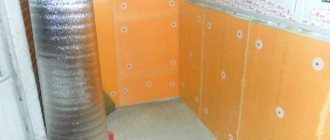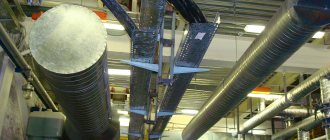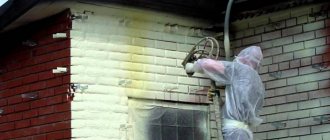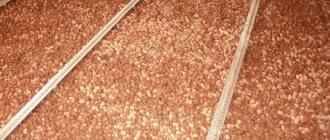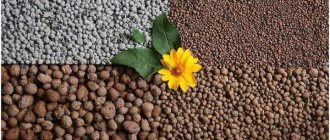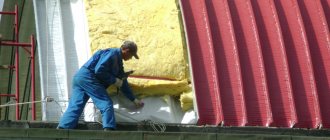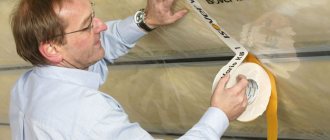All apartment owners in high-rise buildings sooner or later face the problem of freezing through the walls. In this case, the apartment does not have to be corner. There are many reasons why the walls of the house freeze through, and it can be cold inside the apartment - from microcracks on the walls of the house to a too windy area. Either this is not a large thickness of the brickwork of the walls, or the point is in the wall panels themselves.
Overhaul of interpanel seams or insulation of only the balcony will not relieve residents of the cold in the winter season. You need to thoroughly insulate the walls of your apartment.
Insulation of apartments in high-rise buildings (brick or panel), and indeed the insulation of walls, must be done from the outside of the building, since, having carried out the insulation from the inside, the walls themselves will remain cold. Insulation of apartments in high-rise buildings is most often done with the help of industrial mountaineering.
What is industrial mountaineering?
Industrial mountaineering allows you to perform various assembly work at height, buildings of any purpose, including external insulation of apartments, without resorting to the installation of scaffolding, cradles or aerial platforms. Specialized equipment allows industrial climbers and high-altitude climbers to reach even the most inaccessible places. At the same time, high-altitude climbers "get" to the place of installation work by descent and ascent on ropes.
Carrying out high-altitude work with the help of industrial climbers:
- First of all, it is high mobility;
- Fast organization of the workflow;
- Preparation for work takes no more than one hour;
- Possibility of lifting building materials, in places where lifting equipment cannot reach;
- Compared to calling a "tower" - carrying out high-altitude work with the help of industrial climbers is a rather economical option;
- Insulation of walls with the help of "promalpa" allows you to work in the most inaccessible places.
Insulation of the facade at a height. Nuances. Forests or industrial mountaineering
It's good when the house is one-story. Questions and nuances with the insulation of facades at a height, usually in such cases, do not arise. Even if the house is 2-storey. What if you have 3 floors? What if your apartment is on the 7th or 15th floor? And if you need to insulate the entire multi-storey building?
Nuances of facade insulation at height
High-rise work on facade insulation can be carried out in three ways: with the help of scaffolding, with the use of various mechanisms: special lifts and cradles, as well as with the help of industrial climbers.
Each of the methods has advantages and disadvantages, certain limitations. It's up to you, but we will now try to highlight the main nuances.
Scaffolding
Convenient, allow to carry out the necessary work quickly enough. They are relatively easy to install and disassemble, but the process itself is quite long. If your object is not very high, and the volume of work is planned to be serious, then scaffolding is an excellent solution.
Among the shortcomings it is worth noting
- rent (for a long term),
- payment for assembly / disassembly installation work,
- the need to cover the scaffolding with a protective net,
- a decrease in the level of lighting in the premises (if the building continues to live or work),
- conditions for the installation of scaffolding may not be available.
Lifts and cradles
Lifts
Lifts are extremely convenient if the volume of work is small: for example, to insulate the facade of one or two apartments at a not very high height: 3-4 floors. You won't earn much from the lift, but such volumes are quite feasible for it.
Disadvantages:
- equipment rental,
- small work area,
- longer terms.
Cradles
Due to its size, it is possible to cover a significant strip of the facade from the construction cradles in one pass. The speed, in comparison with lifts, is much higher due to the spaciousness of the platform. In addition, for these mechanisms, it does not matter at what height the object is.
Disadvantages:
- equipment rental,
- delivery costs, lifting to the roof, installation of equipment,
- it is not always possible to mount equipment on the roof.
Industrial alpinism
Indispensable in cases where the building is very high, and the installation of cradles is impossible. All other methods in this case are simply not suitable.
But not only tall buildings are objects where it is convenient to use the labor of industrial climbers. Even on ordinary 9-storey buildings and even on "Khrushchev" buildings, this can be beneficial.
Basically, due to the absence of the need to pay any rent. There is no need to pay for scaffolding and their installation / dismantling, or for cranes, hoists, cradles, etc.
There is also no need to fear the poor quality of work. Highly qualified specialists with significant work experience work as industrial climbers.
Disadvantages: the term of work is significantly increased.
What to choose: scaffolding, machinery or industrial mountaineering?
"Rufasad" will offer you the best option, taking into account your time frame and budget. You will receive only the best solution!
Internal wall insulation
From the outside, it may seem that internal wall insulation is much easier to perform, you can save on industrial climbers, and if the need arises, you can replace some materials yourself. But as many years of experience show, internal wall insulation has a number of disadvantages, and is not very effective.
Disadvantages of internal insulation:
- the area of the rooms decreases, this is especially noticeable when several walls are insulated;
- wall insulation will also require a change in the interior;
- during the internal wall insulation, residents will temporarily have to change their place of residence;
- with internal insulation - the walls of the house are isolated from the heating system. A layer of insulation will prevent the walls from heating up. Condensation forms between the layer of insulation and the wall, the lilac will begin to penetrate into the room, causing premature damage to the walls.
Advantages of internal insulation of an apartment:
The main advantage of the internal insulation of apartments is the low cost and the possibility of independent work.
The choice of the insulation system
Let's take a closer look at the most popular insulation systems.
Plastering system
Do-it-yourself wall insulation from the outside using this system is used on masonry materials: insulation is glued to the facade, fastened with dowels, the surface is plastered on an alkali-resistant mesh. Finish - decorative plaster or acrylic paint.

The advantage of the system is its simplicity: no frame is needed, fastening the insulation does not require special skills.
The disadvantage of the system is the limitation of work by the air temperature: it cannot be performed at temperatures below minus 5 ° С and above +25 ° С.
It is used to a limited extent on wooden walls: since the vapor permeability of wood is higher than that of most heaters, the insulation will require forced ventilation, otherwise the walls “under the fur coat” will begin to rot in a few years.
Ventilated system
The system requires a frame made of metal or wood, in the cells of which insulation is attached, then a hinged facade is fixed on the frame.
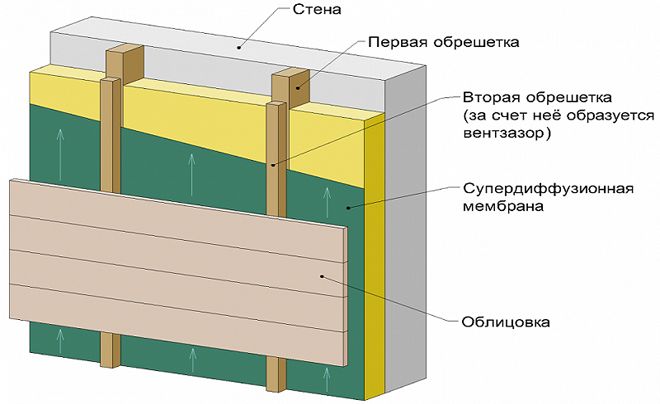

The advantages of the system are independence from air temperature and a variety of finishing options:
- Rack siding (steel, aluminum, vinyl, acrylic).
- Wood materials (planken, lining).
- Plate materials (metal, ceramics, composite, fiber cement).
The downside is the high cost and technical complexity of the work, however, the implementation of a curtain facade, although it requires accuracy, is also doable by the hands of an amateur builder.
External wall insulation
The insulation is attached to the outer walls, covering all the outer walls of the apartment. Advantages of external wall insulation:
- living space in the inside of the room does not decrease;
- wall insulation work will take place outside, which means that in the interior of the apartment you will not have to re-do the repairs and leave for the duration of the work to "stay with your relatives";
- cracks from periodic thawing and freezing of the walls will not appear on the walls of the apartment;
- the humidity inside the apartment will decrease significantly.
Mineral wool
Mineral wool slabs (mineral wool) are a heat-insulating material that can be used to insulate walls inside or outside.
A protective layer must be laid on top of any insulation. If mineral wool is used for internal insulation and sound insulation, drywall may well serve as such a protective coating. But with external insulation, the protective layer can be either siding or a layer of decorative plaster. All topcoats must be resistant to aggressive environmental influences.
Insulation installation
External insulation of the apartment with the help of a promalp must be carried out from the bottom up, horizontally laying out row by row. For the best effect of insulation - you should make a five-centimeter spade behind the panel seam, if the apartment is located in a brick house - you need to go outside the insulated apartment.
Styrofoam is attached to the wall with a special adhesive solution and a dowel of nails. If the insulation plates protrude beyond the windows, the excess must be cut down.
Effective insulation of apartments involves the formation of an air gap. This is especially important if mineral wool slabs are used as insulation. For the preservation of which in its original form, air circulation is needed between the insulation and the wall.
Features of high-rise work
Since the main installation work when insulating an apartment is carried out at a high altitude using the necessary equipment, a distinctive feature of the external insulation of an apartment is the need to contact specialized companies.
You can independently insulate an apartment if you have the necessary experience in carrying out work at a height or if the apartment is on the ground floor.
The cost of insulating an apartment always depends on a number of important factors, such as the height of the building, the thickness of the insulation, the type of insulation (mineral wool is much more expensive than foam), and the quality of the finishing layer.
The cost of performing work on the insulation of the apartment will become known only after the master leaves the site, measurements, and the choice of finishing materials.
See also:
The cost of high-rise work Insulation of facades with foam or mineral wool Go to the news section >>>
The section "prices" shows the average prices for Rostov and the Rostov region, the cost of high-rise work in other regions is calculated individually.
Insulation of the apartment from the outside - estimated cost
| NAME OF WORKS | Unit rev. | price, rub. |
| Surface preparation for insulation (base profile with fastening) | m. | from 300 |
| Thermal insulation using mineral wool board or expanded polystyrene | sq. m. | from 400 |
| Installation of a waterproof membrane | sq. m. | from 100 |
| Installation of ventilated facade panels | sq. m. | from 2 700 |
| Facing the facade with metal cassettes (alucobond) | sq. m. | from 3 100 |
| Leveling the surface of a wet facade after insulation (plaster) | sq. m. | from 350 |
| Facade cladding with sandwich panels | sq. m. | from 2 700 |
Advantages of external insulation of an apartment:
- increasing the comfort of housing (in the winter season the house will be very warm, and in the summer it will be fresh and cool);
- reducing the cost of heating services (since the payment for them rises annually, this is a rather weighty argument);
- the absence of the likelihood of mold and mildew on the surface of the walls inside the room (this will help keep residents healthy);
- increasing the soundproofing characteristics of the walls.
There are times when the outer walls do not meet modern thermal insulation requirements, up to a quarter of the heat loss of an apartment can occur. Therefore, work on the insulation of the facade of the house requires special attention. There are different building technologies for erecting walls, but two-layer walls, in which the supporting layer is insulated with a light wet method and finished with a thin-layer plaster, are heat-saving. To insulate the outer walls, it is necessary to accurately select a set of materials and use them comprehensively. For insulation it is necessary:
- Dowels, starting, corner, and other strips.
- Insulation (expanded polystyrene or mineral wool).
- Adhesive for fixing insulation in the form of a dry mixture.
- Paint.
- Mix for creating a reinforcing waterproof layer for plaster.
- Reinforcing mesh.
- Primer for plastering.
- Thin-layer plaster.
Mineral wool usually has a thickness of 5 - 20 cm and a good density, and expanded polystyrene with a thickness of 10 to 20 cm.The thickness of the material is explained by the fact that slabs are used not only for walls, but also for window and door openings, fillings and cracks, etc. etc.


The work is carried out in a strict sequence: the walls are cleaned, primed, insulation is mounted on the glue mixture and fastened with dowels. A reinforcing layer is applied on top and the mesh is embedded in it. Then it is covered with another layer of reinforcing mixture. And after 2-3 days, the walls can be plastered and then painted. It is important to remember that the sheets of insulation must be placed taking into account the dressing of the seams and pay special attention to finishing around windows and doors, corners and joints. At the same time, it is also recommended to carry out work on sealing the interpanel seams in order to maximize the heat in the apartment. Otherwise, material deformations, cracks and cold bridges may appear.

